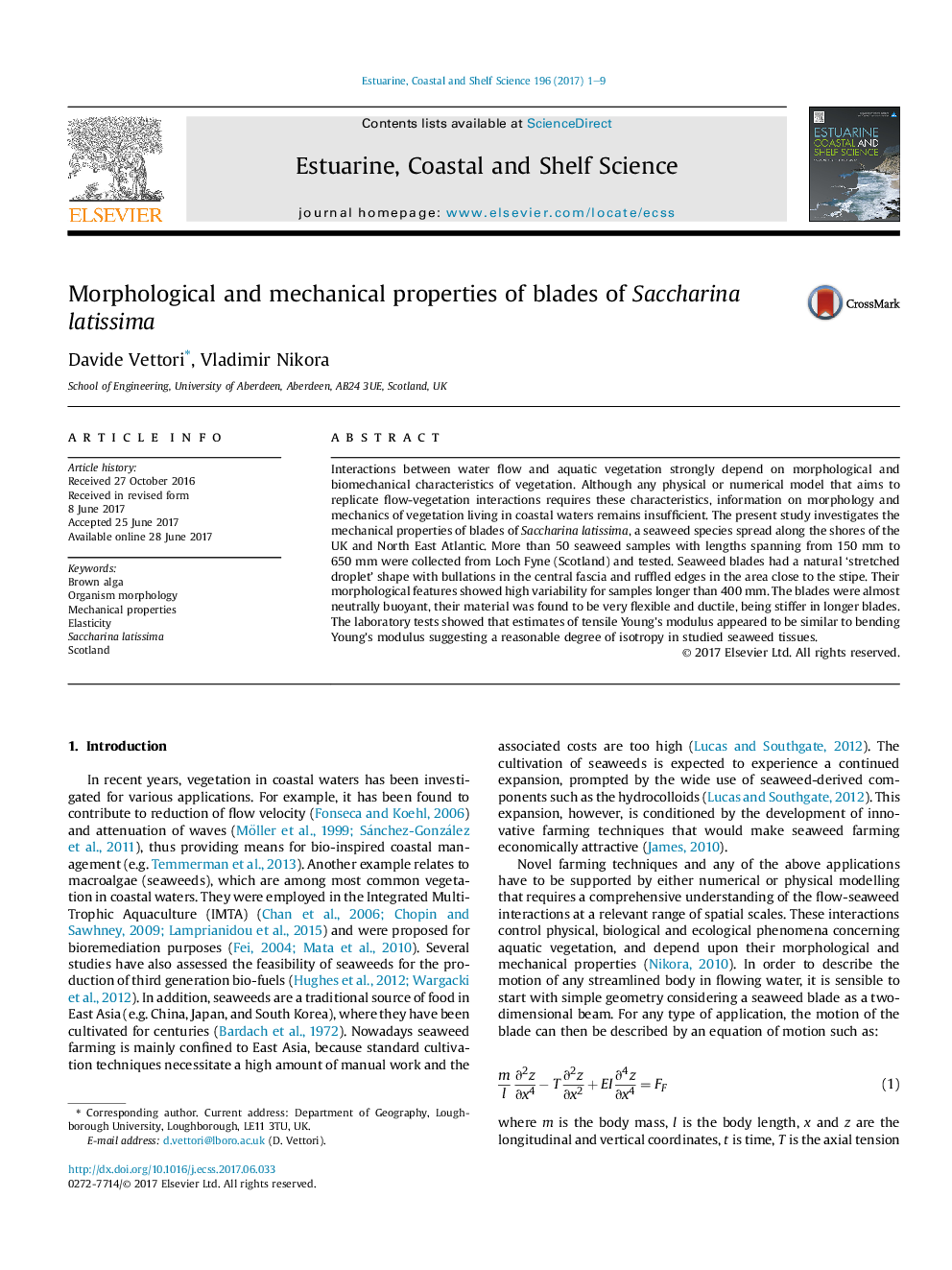| Article ID | Journal | Published Year | Pages | File Type |
|---|---|---|---|---|
| 5765119 | Estuarine, Coastal and Shelf Science | 2017 | 9 Pages |
Abstract
Interactions between water flow and aquatic vegetation strongly depend on morphological and biomechanical characteristics of vegetation. Although any physical or numerical model that aims to replicate flow-vegetation interactions requires these characteristics, information on morphology and mechanics of vegetation living in coastal waters remains insufficient. The present study investigates the mechanical properties of blades of Saccharina latissima, a seaweed species spread along the shores of the UK and North East Atlantic. More than 50 seaweed samples with lengths spanning from 150Â mm to 650Â mm were collected from Loch Fyne (Scotland) and tested. Seaweed blades had a natural 'stretched droplet' shape with bullations in the central fascia and ruffled edges in the area close to the stipe. Their morphological features showed high variability for samples longer than 400Â mm. The blades were almost neutrally buoyant, their material was found to be very flexible and ductile, being stiffer in longer blades. The laboratory tests showed that estimates of tensile Young's modulus appeared to be similar to bending Young's modulus suggesting a reasonable degree of isotropy in studied seaweed tissues.
Related Topics
Physical Sciences and Engineering
Earth and Planetary Sciences
Geology
Authors
Davide Vettori, Vladimir Nikora,
